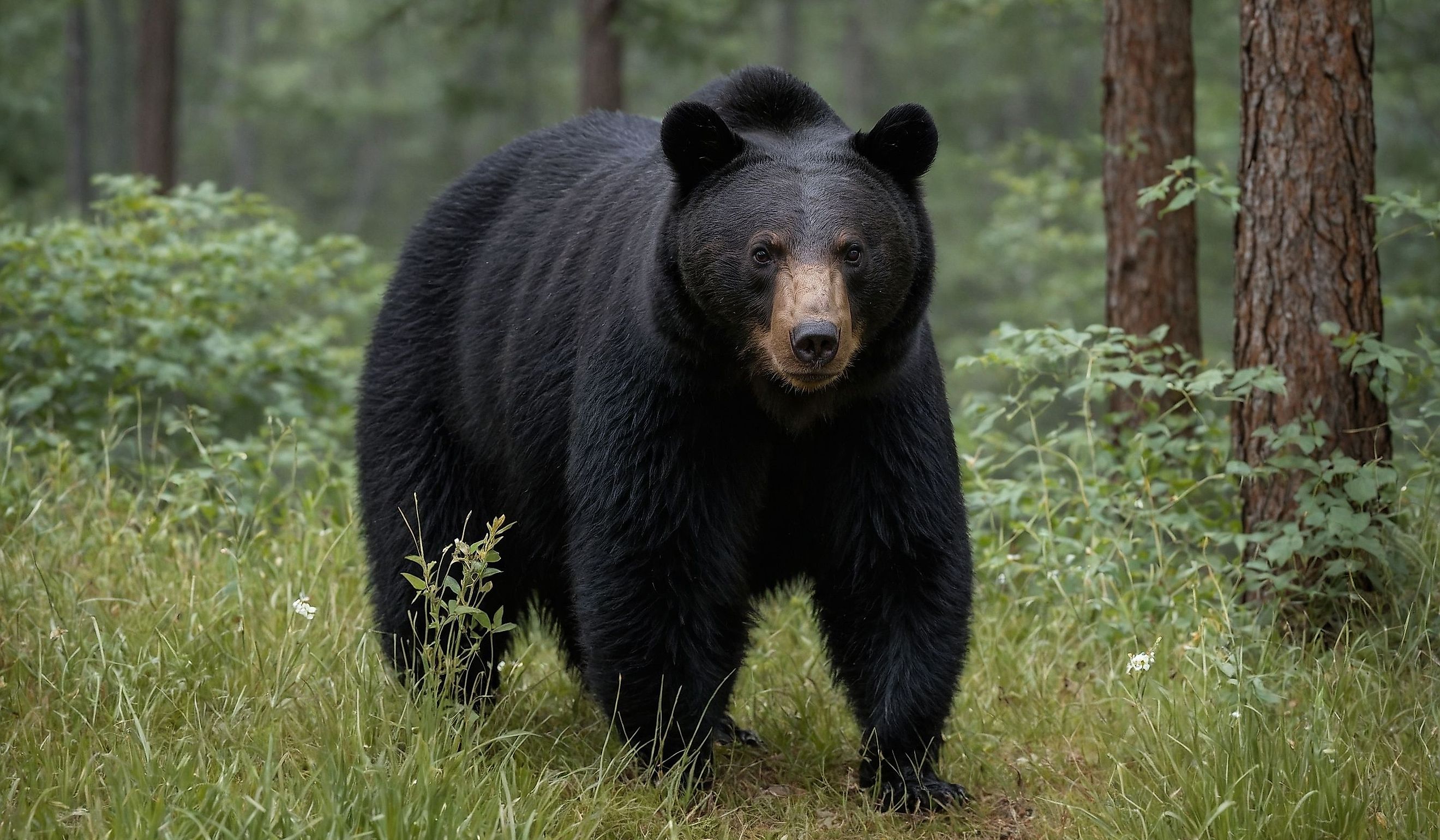
The 11 Deadliest Animals in New Jersey
New Jersey borders New York in the north and northeast, Pennsylvania in the west across the Delaware River, and Delaware to the southwest across Delaware Bay. The Atlantic Ocean is to the east. It is home to an array of wildlife species, including mammals, reptiles, birds, and amphibians native to the state. Most of these wildlife species are harmless to humans; however, even the gentlest creature can rear its head to become deadly.
If you’re planning a trip to New Jersey, you might want to have a gander at this list of the 11 deadliest animals in New Jersey before you buckle in and hit the road. Knowing more about the deadly animals in this state before a trip to it will keep you safe and give you a much-needed heads-up on the wildlife that could pose a problem during your vacation.
Coyote
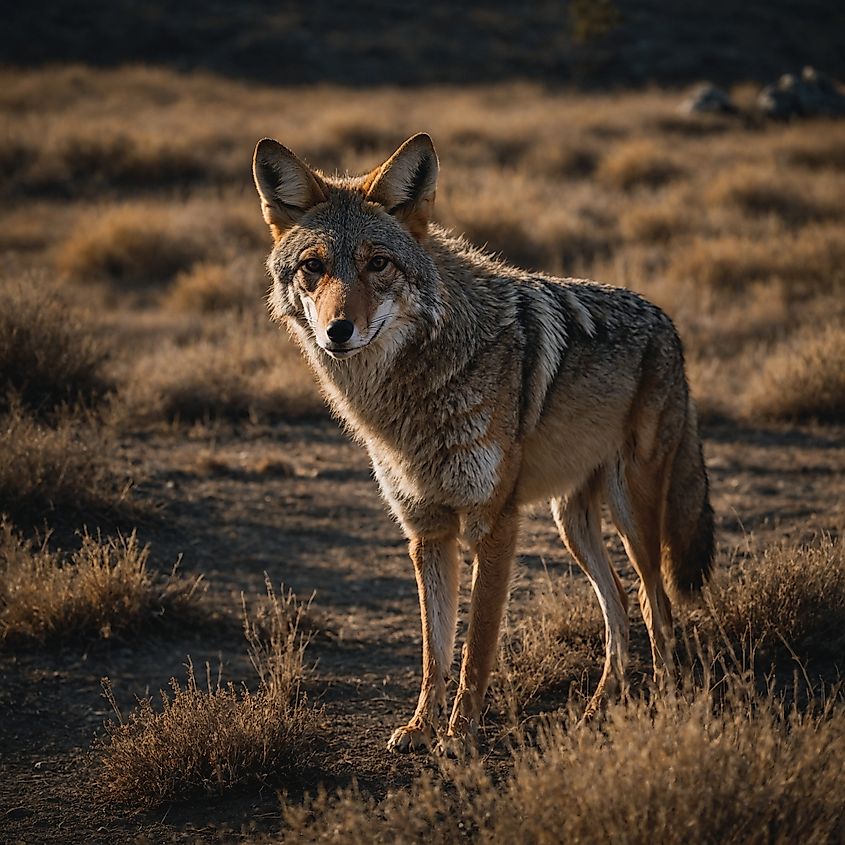
The Coyote, or (Canis latrans), can be identified by its size of around 20 to 24 inches high and 3 to 4.5 feet long and its coloring: white on the underside and yellow-brown to grayish on top. These animals have large, triangular ears, bushy tails, back noses, narrow muzzles, and yellow eyes. Coyotes roam over large ranges in North America and can be found in numerous habitats, from the tundra to the tropics, so unsurprisingly, they are found in New Jersey.
These animals are wary of humans, and while not outwardly aggressive, coyotes have been known to attack humans. They are usually most aggressive when losing their natural fear of humans due to the association of developed areas having easily accessible food sources. Also, when coyotes become rabid, they are also more likely to attack humans.
It is incredibly rare to encounter an aggressive coyote in New Jersey, but it's not improbable. However, if you encounter one that shows aggression signs like growling, lunging, or snarling, you should call animal control or the police immediately to avoid unnecessary conflict and get to safety.
Eastern Yellowjacket Wasps
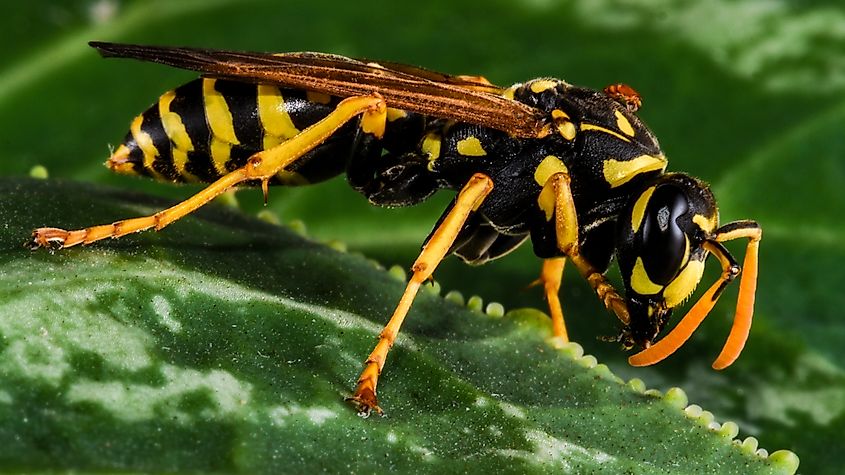
Eastern yellowjacket wasps belong to the genera Vespula maculifrons and have easily identifiable traits that distinguish them from bees.
Additionally, these wasps have elongated bodies measuring around half an inch long, covered in black and yellow stripes with a narrowed space between their abdomen and thorax, giving them the appearance of a tiny waist.
Yellowjacket wasps can be found anywhere humans are in New Jersey, nesting in attics, wall voids, and the ground outside. These wasps are known to be more aggressive than other bee types and will often ram into people or buzz close by when marking their territory or looking for a meal.
In extreme cases where they feel provoked or feel their nests are threatened, they will often sting multiple times, which could cause an allergic or anaphylactic reaction in certain individuals. It is also important to note that as the summer season comes to a close, wasps will be highly aggressive, and many die off as a result of food scarcity, so if you’re visiting New Jersey during this season, be warned.
Feral Pigs or Wild Hogs
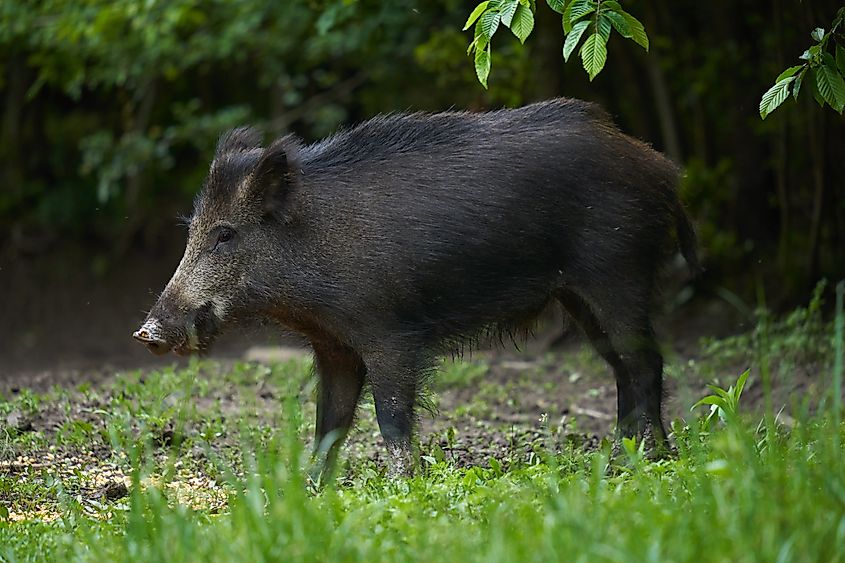
Feral pigs or wild hogs (Sus scrofa) are wild pigs not native to the U.S. They are considered invasive in New Jersey because they were introduced from overseas. Since their introduction in the last 50 to 100 years, the species population has exploded, and wildlife departments are now implementing population control programs.
These feral pigs or hogs can be identified by their thick, coarse hair, which ranges in color from reddish-brown to black. Their coloration can also include white and spotted patterns.
Feral hogs have large necks and heads with relatively short legs, can weigh 145 to 600 pounds, and range from around 5 to 6 feet in length. Adult male hogs have large canines protruding from their mouths and long, bristly hairs down the middle of their backs.
Due to their lack of fear and aggressive nature, feral hogs can often be dangerous. They are a danger to pets, livestock, and humans due to their potential to spread disease, and it is highly advised that you avoid approaching these unpredictable animals if you see them during an NJ visit.
American Black Bear
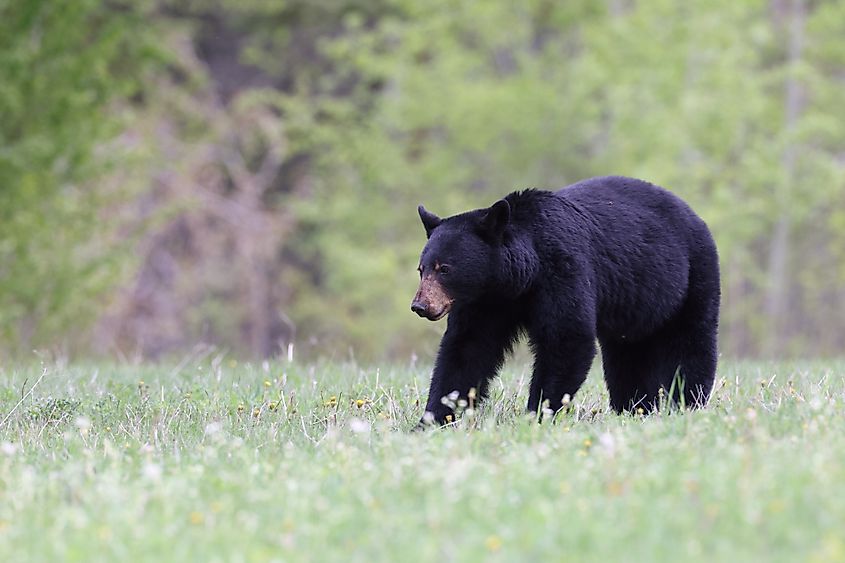
The American black bear coat (Ursus americanus) comes in various colors, from black to brown, but most bears in New Jersey have a black coat with a brown muzzle. However, in recent years, around 15% of New Jersey's black bears have been seen with a white chest blaze.
Found in a mix of habitats from dense swamps and forest wetlands to mixed hardwood forests, these bears prefer areas with thick cover with habitats in New Jersey found primarily within Warren, Morris, and Sussex counties. Black bears are usually timid around people, with females rarely attacking people to protect their cubs.
While generally non-aggressive, they postulate to intimidate other animals and people when feeling threatened or establishing dominance. While black bear predatory attacks are incredibly rare, they do occur, as one such fatal case was documented in September 2014 in West Milford, Passaic County, NJ.
White-tailed Deer
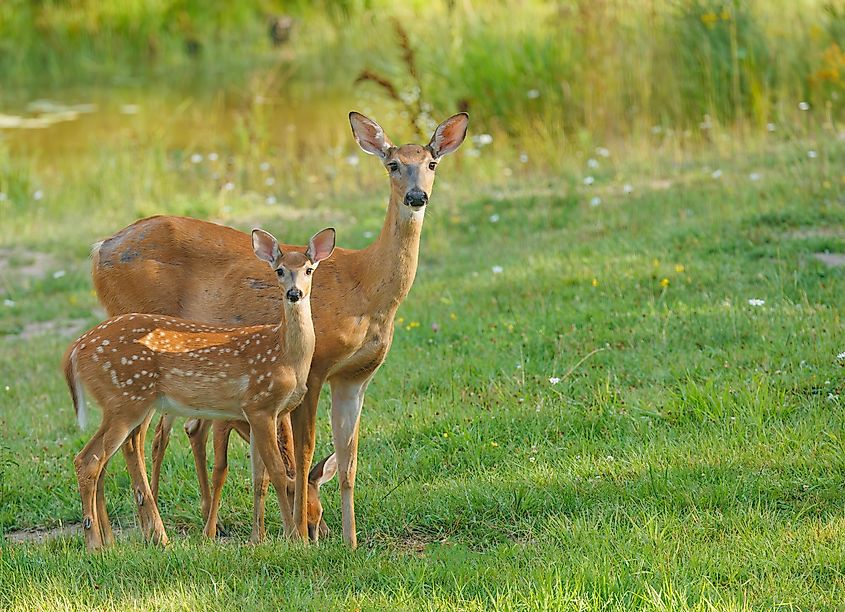
White-tailed deer (Odocoileus virginianus) are identified by their tan or brown coloring in the summer and greyish coloring with a white throat, underside of the tail, and chest in the winter. Male white-tailed deer have antlers that are shed during the winter season. Adults can stand between 31 and 39 inches tall at shoulder height, ranging from around 63 to 87 inches long.
Found in numerous habitats in New Jersey, white-tailed deer are a common sight to NJ residents. These large animals frequently reside near populated suburban areas due to abundant food sources. In New Jersey, white-tailed deer are considered a “potentially dangerous species” due to their ability to inflict severe bodily harm on humans with their hooves and antlers.
This danger is made more apparent during mating seasons when males become more aggressive when looking to secure a mate, and females become defensive of their fawns.
Striped Skunk
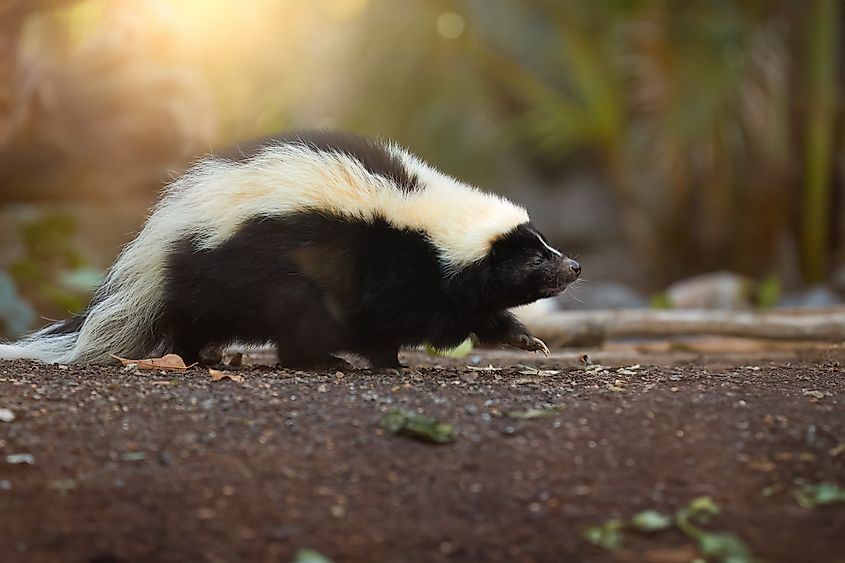
Striped skunks (Mephitits mephitis) are generally the size of a house cat, with adult skunks ranging from 18 to 32 inches long. They are characterized by their pronounced black coats with white stripes on the middle of their backs. However, these animals can also be predominantly white or black in appearance. They also feature a stripe on their faces and weigh as much as 14 pounds.
These skunks have stable and thriving populations in suburban residential or urban New Jersey areas. They focus on making homes in open areas with plenty of cover and clearings; however, some of these populations have been adversely affected by rabies outbreaks in recent years.
Striped skunks have one of the worst reputations in NJ and are best known for their defense mechanism — a skunk's spray. While not typically aggressive animals, skunks will defend themselves if threatened.
Although the spray isn't generally dangerous, it is most unpleasant. The oily liquid can reach up to 20 feet and could cause temporary blindness, intense pain, and nausea. Additionally, skunks often carry the rabies virus, so receiving a bite from one will require an immediate visit to the doctor.
Timber Rattlesnake
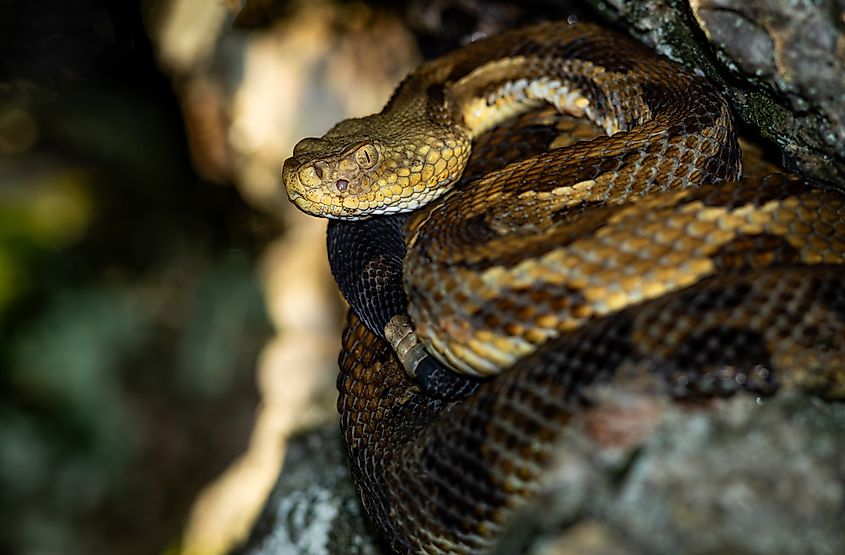
This snake is a state-endangered species, with only three timber rattlesnake (Crotalus horridus) populations remaining. These remaining populations include New Jersey's northern region along the Kittatinny Ridge, southern New Jersey within the Pine Barrens, and the highlands region.
A Timber rattlesnake's color varies and can be characterized by either a yellow or black phase of keeled scales. The yellow phase coloring means the ground color is yellow to brown, featuring dark brown or black jagged “V-shape” blotches and bands towards the snake's head.
The black phase coloring features a similar pattern to the yellow phase; however, the dark brown to black color obscures most of the snake's pattern. In both instances, the snake's head remains unmarked, and the last few inches of the tail are dark brown or solid black in adults. Additionally, sometimes Timber rattlesnakes may be completely black.
There have been no reported instances of bites other than by those handling the snakes (which is not recommended unless you're a trained snake handler). However, that doesn’t mean these snakes aren’t dangerous. If threatened, they will defend themselves, so always keep a safe distance.
Raccoons
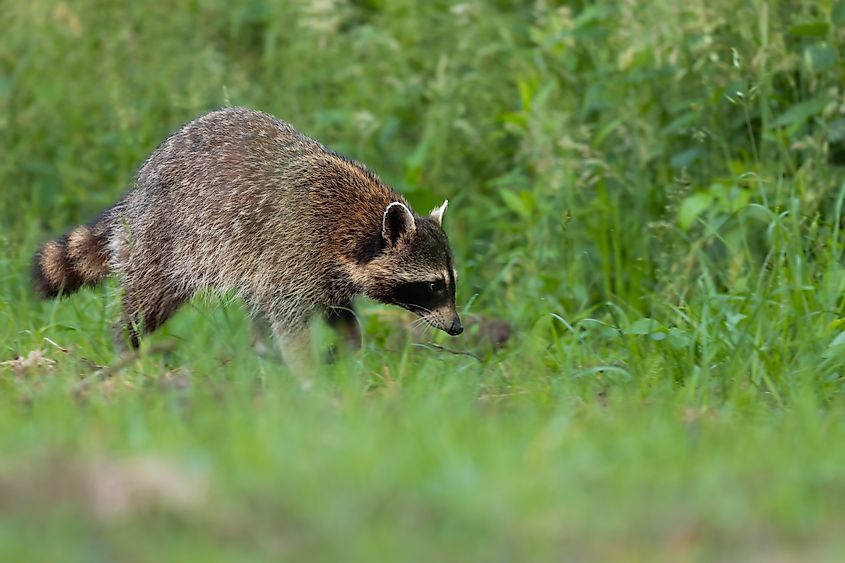
The raccoon, (Procyon lotor), is a native North American and, thus, New Jersey mammal. These medium-sized animals weigh between 7.9 and 19.8 pounds and have a body length of 16.1 and 28.0 inches, making the raccoon the largest procyonid.
Raccoons have a dense undercoat comprising around 90% of their grayish coat. They have two distinctive features, including their facial mask, which has earned them the nickname of “trash bandit,” and their extremely dextrous front paws.
Due to their adaptability, raccoons often use urban areas as habitats, making dens in walls, barns, attics, sheds, and chimneys. Their odor and loud noises can be a nuisance to those living there.
Although generally non-aggressive, raccoons in NJ can be aggressive and bite people if they are infected with rabies or feel threatened. Raccoons that carry the rabies virus can either show symptoms or be symptom-free, so receiving a bite from one will mean you might have to visit the emergency room.
River Otter
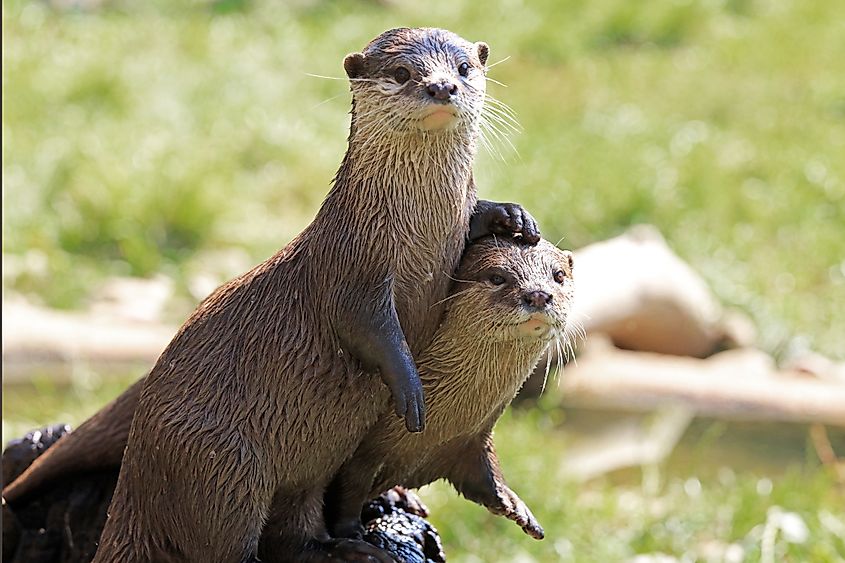
The River Otter (Lontra canadensis) is a North American aquatic mammal and one of the five members of the weasel or mustelid family that live in New Jersey. This species is characterized by its short, powerful legs, long, thick-set, streamlined body, and each foot webbed between the toes.
The otter has a slightly flattened tail, which comprises around half of the otter's total body length. The North American river otters' pelt is typically black to gray-brown, with a dense, short, soft undercoat protected by stiff, glossy guard hairs.
The North American river otter easily adapts to various aquatic habitats like ponds or lakes or by burrowing in ditches but reaches their greatest densities in unpolluted and nutrient-rich water systems. In particular, river otters find the coastal areas of New Jersey especially valuable.
Despite their playful nature and sweet appearance, river otters are dangerous and can be aggressive when confronted. If threatened, these animals can use their sharp claws and heavy, muscular bodies to overpower small children and pets. Additionally, river otters can transmit rabies to pets and humans, and if scratched or bitten, immediate medical attention should be received.
Northern Copperhead
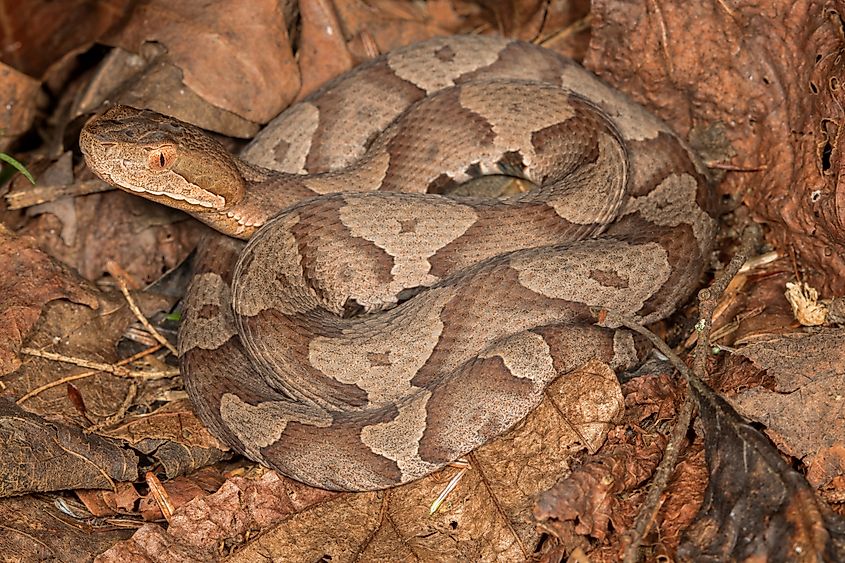
Adult copperheads (Agkistrodon contortrix mokasen) can generally reach between 2 and 3 feet in length, and compared to other snakes of varying lengths, northern copperhead snakes are heavy-bodied and very thick. This snake is one of many snake species found in NJ with a brownish coloration overall and an interspersed light and dark pattern of bands or blotches.
Northern copperhead adults found in New Jersey can be identified by their unique hour-glass shaped bands when viewed from a bird's eye view. When viewed sideways, the dark hourglass-shaped bands are triangular-shaped,” the triangle tips meet at the snake's back, creating the hourglass pattern.
New Jersey's population of copperheads is distributed patchily along the northernmost half of NJ. These snakes are only found in Ridge-and-Valley zones and the Piedmont Highlands, from Hunterdon, the Sourlands of Mercer, and Somerset counties, Sussex County’s Delaware Water Gap in the north, and the Bergen County Palisades in the east.
Copperhead snakes are generally quite secretive and shy, preferring to remain instead concealed within rough woody debris, rock, vegetation, or leaf foliage rather than being seen out in the open. However, as is the case with any animal, these snakes can be aggressive if threatened or cornered, especially during the mating season, and as one of New Jersey's two only venomous snakes, caution is always advised, and a safe distance is recommended if confronted with one.
Bobcats
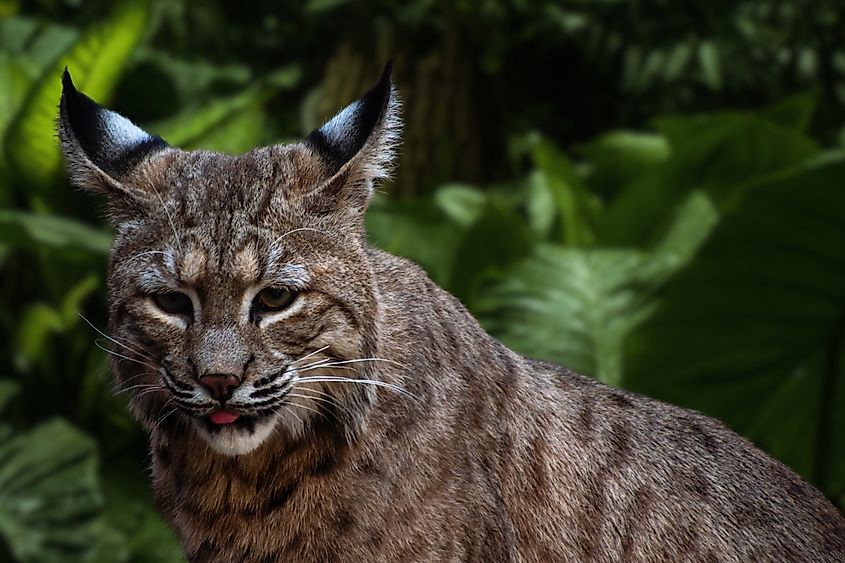
The Bobcat (Lynx rufus) is New Jersey's only wild cat. It has been historically found throughout the State and has been on the endangered list in NJ since 1991. This medium-sized wild cat is roughly 2 feet tall—larger than a house cat but smaller than a lion or cougar.
Bobcats are characterized by their reddish brown to yellowish brown fur, with markings that vary from heavy spotting to “tabby” stripes. They have a short black bobbed tail at the tip (between 3 and 7 inches long) and slightly tufted ears. Bobcats are amongst the most widely distributed native wild cats in North America and can be found in most US states.
These animals are dangerous and shouldn't be approached, especially if they are rabid. Rabid bobcats may become more aggressive and approach humans, causing severe injuries.
While New Jersey wildlife can be captivating and spectacular to look at, common sense dictates that some basic precautions be taken to avoid placing yourself or others in dangerous situations. So, if you encounter one of the deadly animals on this list, remember that it is better to respect it and leave it alone than risk interaction and possible harm.











